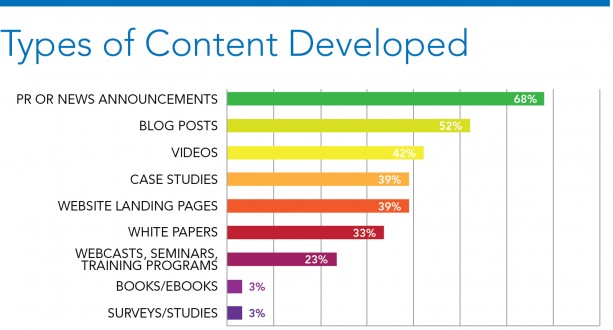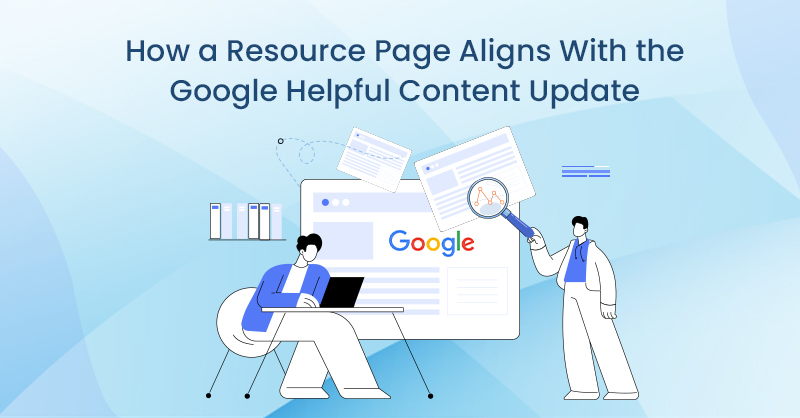While nothing lasts forever, some sites can certainly do better with regard to longevity of their content. Unfortunately, many sites today focus on building content that lacks evergreen qualities, meaning that within no time they are obsolete. However, it doesn’t have to be that way. It is possible to make your website content outlast your lifespan.
What is Evergreen Content?

Also on TechWyse
The How, What, and Why of Evergreen Content
What is Evergreen Content?
First of all, let's remind take a look what evergreen content is. Content becomes evergreen if it continues to attract traffic for a long time after the date of first publishing. Evergreen content is timeless and creates long-term results and traffic today, tomorrow, 3 months from now, and even 5 years down the road. Below are some features that can make content evergreen.
1. Readers and Search Traffic
One of the reigning misconceptions is that evergreen content is what attracts readers, rather than search traffic. It may be because of the tendency to focus on users and not search engines when providing SEO services. We’re not kicking that maxim to the curb, but there is an important point to make: for content to be termed evergreen, the search engines should still index it and return it in search results.
2. Relevance
Relevance is at the heart of the definition of evergreen content. However, people define this differently. A person looking for historical information on a subject may find an old article relevant to the search, but the same article would serve no purpose to someone searching or the latest information.
3. Selectivity
By nature, some topics and articles are impossible to make evergreen and this is okay. This is because while such content is relevant, it does not have the potential to generate a lot of traffic and search volumes. A good example might be “Best SEO marketing software for 2015”. While it’s very catchy now because 2015 is just beginning, towards the end of 2015 and into 2016, this article will be obsolete.
4. Inclusivity
Evergreen does not only apply to articles or blog posts, but anything that passes off as content in a site is a candidate for this test e.g. infographics, product descriptions, service pages, and videos, which are some of the best examples of evergreen content.
The Best Types of Evergreen Content

Considering once again that evergreen is both in reference to readers and search engines, the following types of content have excellent potential to draw readers time and again:
1. Case Studies
These are excellent choices for evergreen content. For starters, the term ‘case study’ is a search modifier that draws traffic by the hordes. Some of the best content writers in the market currently focus on publishing case studies. Case studies are usually reports offered in PDF or other formats. They are also perfect for link-building because other researchers are likely to cite and link to them in their pages.
2. Explanations and Definitions
These are very relevant because definitions of terms never go stale. Google tends to index the best/most relevant answers to definition searches first, so make sure you provide the right and most fitting definitions. Create content focused on defining long-tail terms specific to your niche or industry and you can enjoy perpetual search engine traffic. When you do this, begin with concise definitions, which Google prefers. Afterward, you can have additional content on a subject that plumps up the content on that page as well as provides opportunity to include useful links and keywords.
3. How-to Articles
There’s more content on “how-to” on the Internet than anything else. Google loves this content because readers enjoy it. It has potential for longevity and provides practical solutions to readers’ issues. The more relevant you can make it, the better. Generate factual and high quality content on how-to topics specific to your industry and post them to your blog or site. Conduct a research on what your target audiences would be interested in to guide you on topics to write on.
4. Reports
These have the same effect as case studies. In spite of the fact that they’re time-bound, they provide fertile ground for researches to throw their links towards, especially where the content of the report has a huge interest group.
5. Reviews
Product reviews come in handy, whether they’re for a product that’s new to the market or an existing one. Users today will go online to check out reviews about products and services they’re looking to purchase, meaning that this content will be useful for as long as the product exists. Customer comments are natural, good as well as bad, though you want to highlight the good ones. A few not-so-good ones add a tinge of authenticity to your products, since nothing is 100% good for 100% of the people.
6. Videos
Videos are especially useful to make illustrations, as demonstrators for how to get something done and they are timeless. If you cannot post a video of demonstrating your how-to articles, you can also go for a series of images – diagrams, illustrations or photographs to do the same. Showing is always better than telling.
7. Infographics
Combine the effectiveness of images with text through infographics to create highly shareable and evergreen content. Users adore visuals, and infographics come packed with information, making it highly relevant for users. You can use the services of a graphic designer to translate your content into a catchy infographic that includes useful statistics, key point in summary form and other data to communicate whatever concept you have in mind.
Evergreen Content Tips

Evergreen content has two key components: quality and relevance. There are a few things to do to increase the evergreen-ness of content as you create it:
1. Avoid showing the date
Including a date in your content provides definitive timestamp that will render your content older as time passes. While you cannot avoid dates that are automatically placed on headers, you can actively prevent time-stamping your articles by writing topics and text carefully. For instance, a phrase like ‘The Olympics were in Sydney this year’ will immediately let a user know what year you are referring to.
This means that in creating evergreen content, you want to steer away from news-based opinion or analysis articles, events-based pieces, trends and statistics. However, for every rule, there are some exceptions.
2. Regular and Routine Updates
Evergreen content is not about creating it the first time round and leaving it that way. Google prefers pages that get frequent update according to the ‘freshness factor’ within the algorithm. Touch up the content every so often – remove the stale points and add content relevant to the present time. The more content you move and touch up, the higher you score on the freshness test for search engines.
3. Full Disclosure
When you update content, you should place a note at the beginning to let the reader know that you have added new information. Subjects will change and you may have to modify your content with them – new regulations, new user needs, and new facts – and it is okay to modify accordingly, as long as the reader is aware of what changes you have have made to it.
4. Write New Articles
Where there is no way to make the article timeless, you can add a note at the beginning stating that the article deals with old topics or past timeframes, and then provide a link to content that is currently relevant. This is essential to get your articles favored by Google’s SERPs, even if they are old.
You don’t want a user to click on your page and bounce back to Google. The open admission will increase engagement and trust with the users.
5. Internal Linking
If you’re writing a comprehensive guide on a wide topic, you can divide it into smaller sections and then interlink those articles to one another. This can help a user looking for something specific, as well as guide them towards finding related information should they need it. It’s also useful for SEO, and it will push search engine crawlers towards your evergreen articles.
You can also promote the content in other places within the site to make use of traffic from all sources.
6. Curating content
Compilation posts are possibly the easiest way to create evergreen content, if done properly. Curated content is both user- and search engine-friendly, which is why it’s very popular with content marketers today. Users love being able to find all the information they need in one location, because then they don’t need to spend time researching multiple resources.
Based on the subject of discussion, ensure your post is well organized and balanced – provide insightful pros and cons for each itemized element and why a user might opt for it or not. You can provide these roundups on virtually any topic relating to your industry.
7. Avoid Using Technical Language
Most of evergreen content is usually intended for the use of beginners. If you use highly specialized, technical and/or complicated language, they will turn away in search of something simpler. Limit your language to terms the average beginner can understand as much as you can.
Sometimes you may feel like writing a piece to demonstrate your mastery of a particular topic. This, however, won’t avail much, because the experts who understand what you’re saying are unlikely to be online searching for assistance. Limit yourself to beginners, and phrase your content accordingly.
Key Takeaways
Evergreen content should be timeless to ensure that it remains relevant with the passage of time as well as be of high quality in order to attract traffic. You should place emphasis on in depth, long-form writing, which is preferable for Google. Create authoritative content on concepts and topics that are relevant to your industry to drive traffic and improve conversions. Don’t forget to share your pieces on social media from time to time, being that they are timeless.





